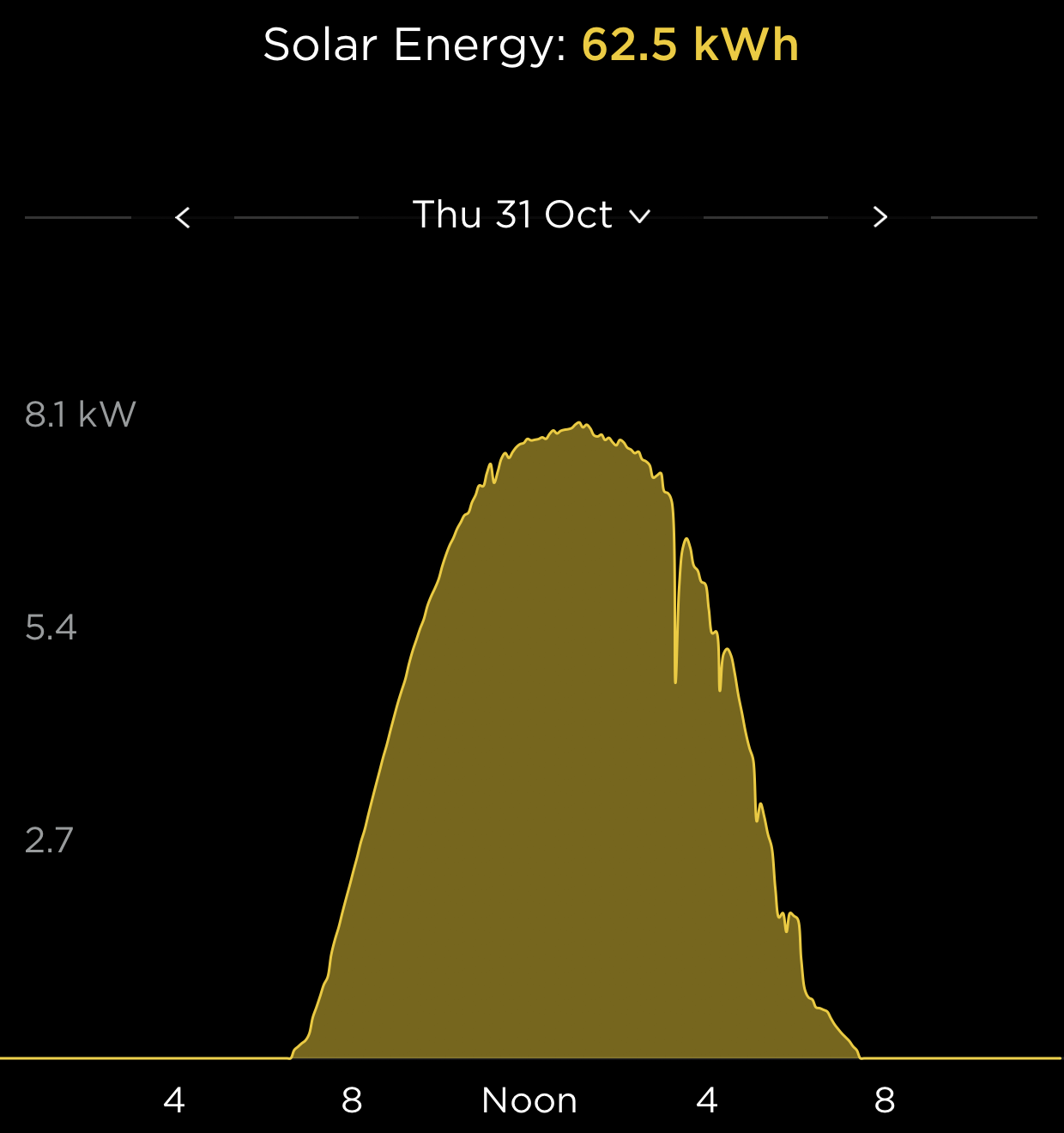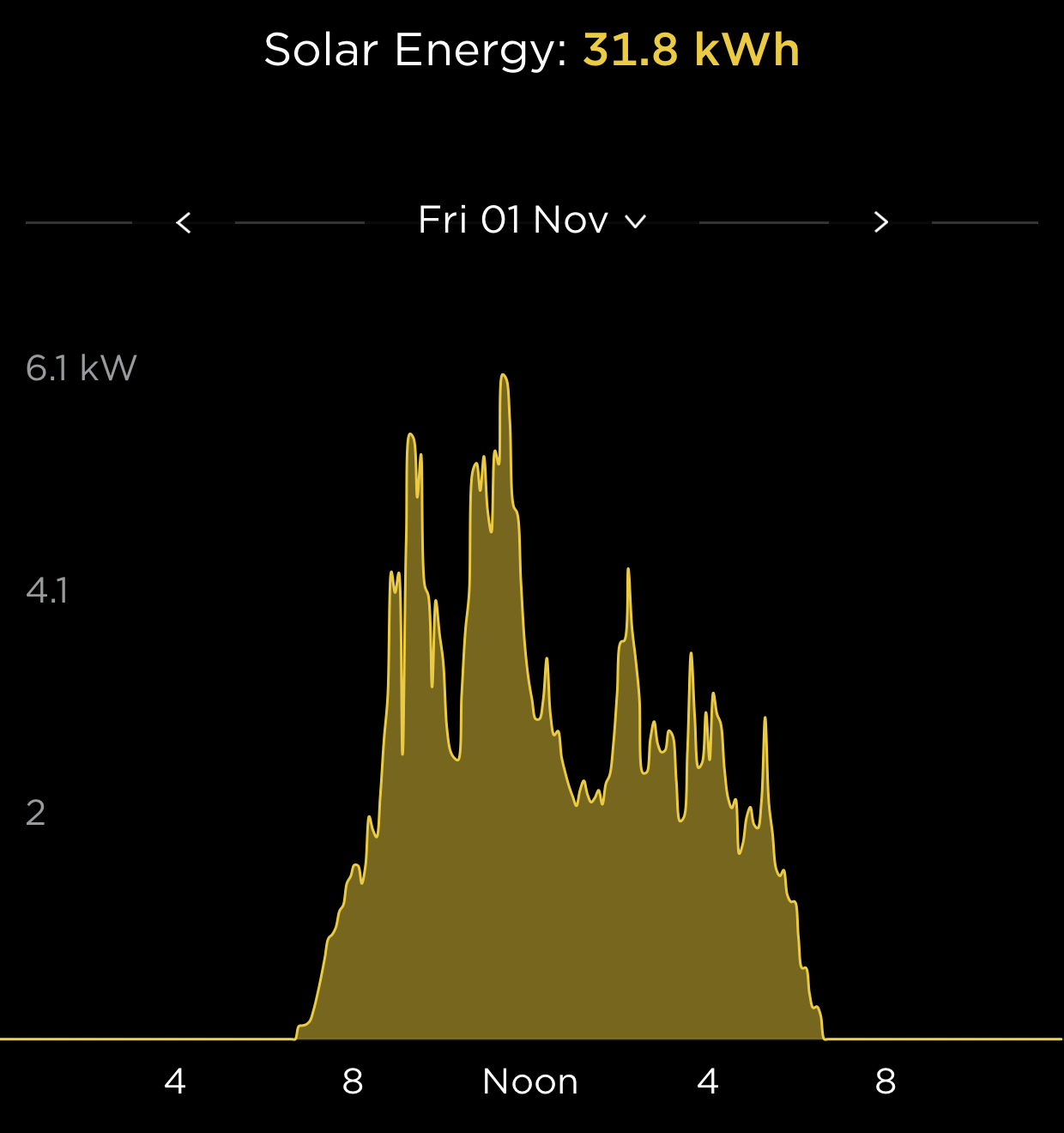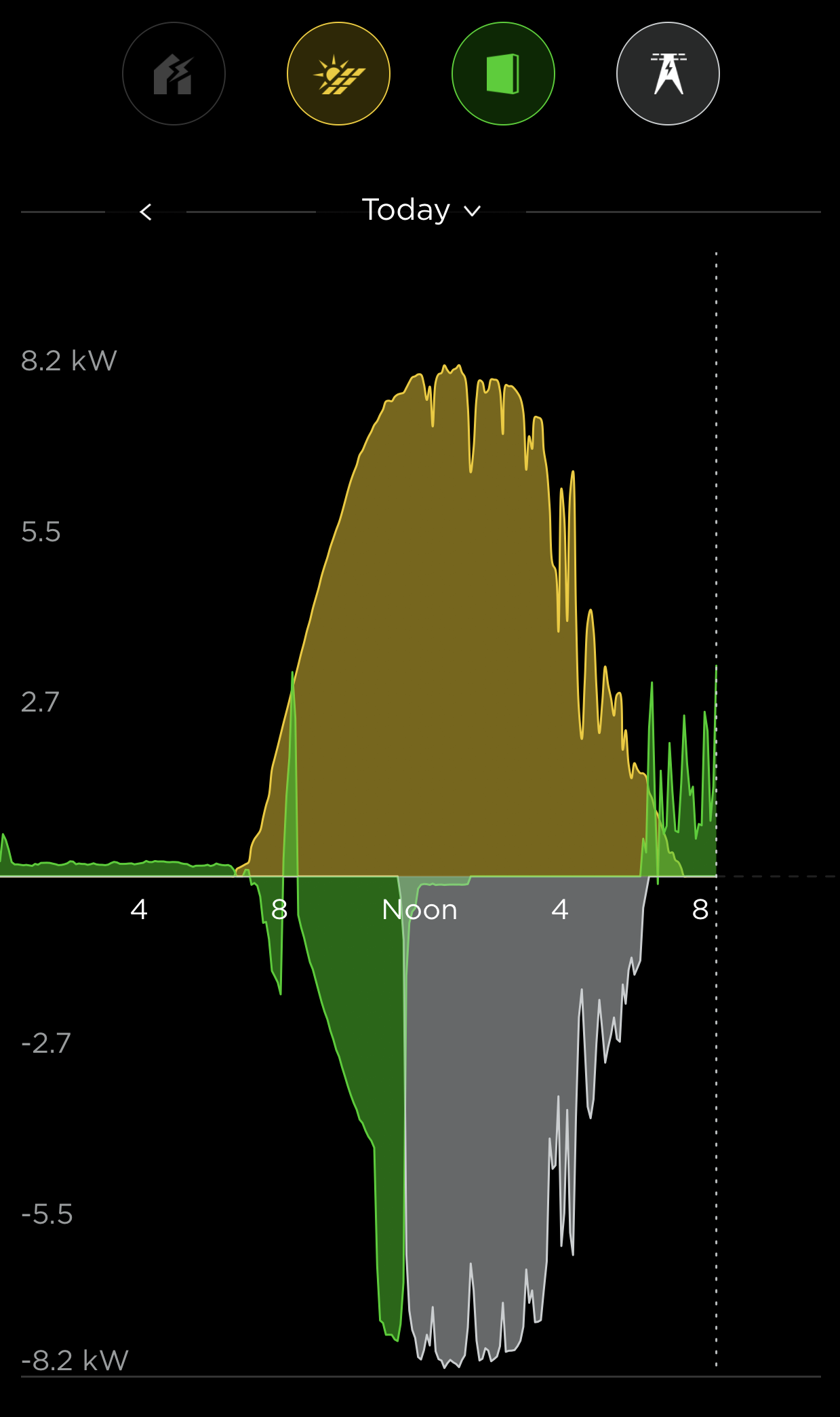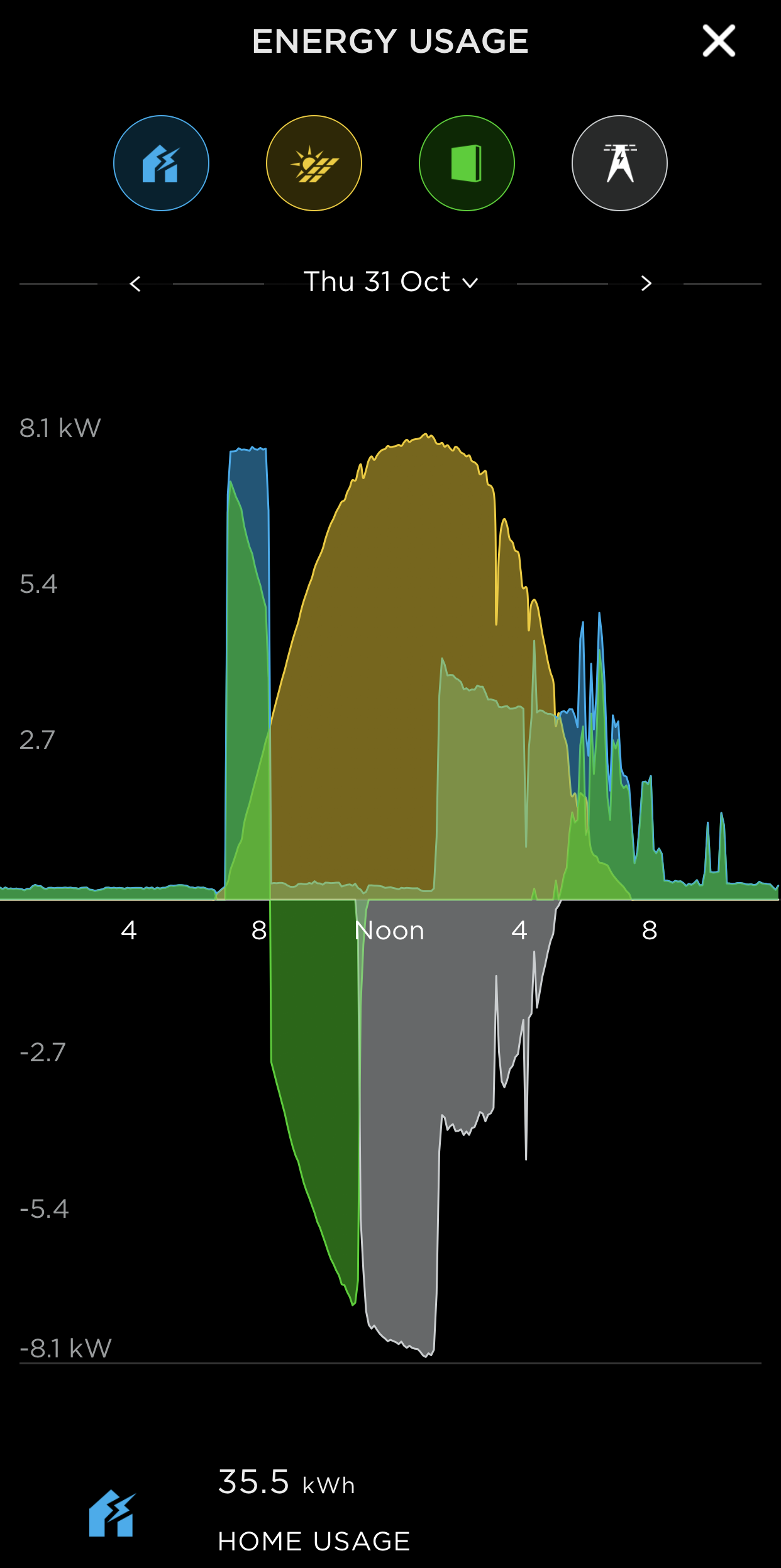Self Powered Part 2: Amped AF
For those following along at home, in my previous post I talked about getting a second battery and installing more solar on my roof to try and go completely self powered. The core issue is that a 5kW system just wasn't enough to charge 2 Powerwalls and keep my house completely off grid. It would perform great on sunny days, but throw a few cloudy days in and suddenly I was back to drawing on grid power like some kind of caveman. My goal in putting more solar on my roof was simple: could doubling my solar capacity mean I could go completely off grid?
The conclusion as it turns out is a resounding: YES! Here's what happens now that I have an 11kW system on a sunny day vs a rainy day:


The above is interesting for a few reasons:
- Most people don't realise that you can still generate solar power even when it's raining. My system pulls down around 2-3kW when it's bucketing down.
- With the above in mind, now think about the fact that the sun comes up every day, on a reliable and predictable schedule. You can literally set your watch to it. This means the power is very reliable. The sun isn't likely to break down anytime soon.
- A typical house like mine needs around 20kW/h a day to power itself. Obviously this will vary widely per household, but you only need to check your last power bill to see what your daily average is.
Which means that, even on a rainy day, my house can power itself with no issues. Additionally on a sunny day, it can make me money by exporting excess power back into the grid:

The graph above shows power being generated from the sun in yellow, and below the graph you can see the green part is where it's going into the battery, and once full, the grey is the power being put back into the grid.
There's one last bit of this experiment I want to share which surprised and delighted me. I have an electric car (you can read more about it here). Prior to installing these panels I was charging my car mainly from the grid. I use an energy provider called Amber, which has 30 minute wholesale based prices, so I would wait til power was cheap to pull down lots of it. This flexibility was nice, but it still meant I was needing to draw on the grid to power my car. On average I use roughly 10kW/h's a day to drop my kids off at school and go to and from work. While electricity is far cheaper than petrol (and cleaner, especially here in South Australia!), I still was a bit miffed that this was throwing a spanner in my 100% self-powered works. It turns out I needn't have been, because for the last month, my car has been 100% powered by the panels on my roof as well! I think it's worth pausing for a moment just to think about that. All the power my house uses (for hot water, cooking, cleaning, washing, heating, cooling, etc) and my entire commute to and from work and other family outings, are now powered by the sun beaming onto my roof every day. Not only does that mean it's free, but it's also dependable and convenient. If there's a shortage of oil/petrol, I'm not bothered. If the power goes out for a day or more, I'm not affected. I'm completely self-sufficient in the best possible way.
So what does a typical 100% off grid day look like? My car (which I plug in when I get home) is scheduled to start charging itself 1 hour 20 minutes before I leave for work. Most mornings there's 70-80% remaining in my batteries (they have a capacity of roughly 27kW/h), and my car takes about 10kW or so out which is what I'll use that day. Then the sun comes up, and starts charging the batteries back up. Depending on the weather they are normally full sometime between 12pm and 3. At night we use about 20% cooking, doing the dishes and powering our night-time activities and so we're back to about 80% by bed time. There are a few weather based variations as well, for example on a really hot day (30 degrees celsius or more) I'll flick on the air-conditioner remotely at lunch time to cool the house down to 23 degrees using that free excess power. Here's an example of the day described above in graph form:

The blue spike at the start is my car charging, then you'll notice another spike when the air conditioner turns on. The green and grey below the graph are power going into the battery, then once full the rest going back into the grid. Maybe I'm a nerd, or perhaps just plain weird, but staring at this image fills me with a weird sense of satisfaction and awe. The electrons and I are no longer enemies, but friends enjoying a journey of energy discovery together.